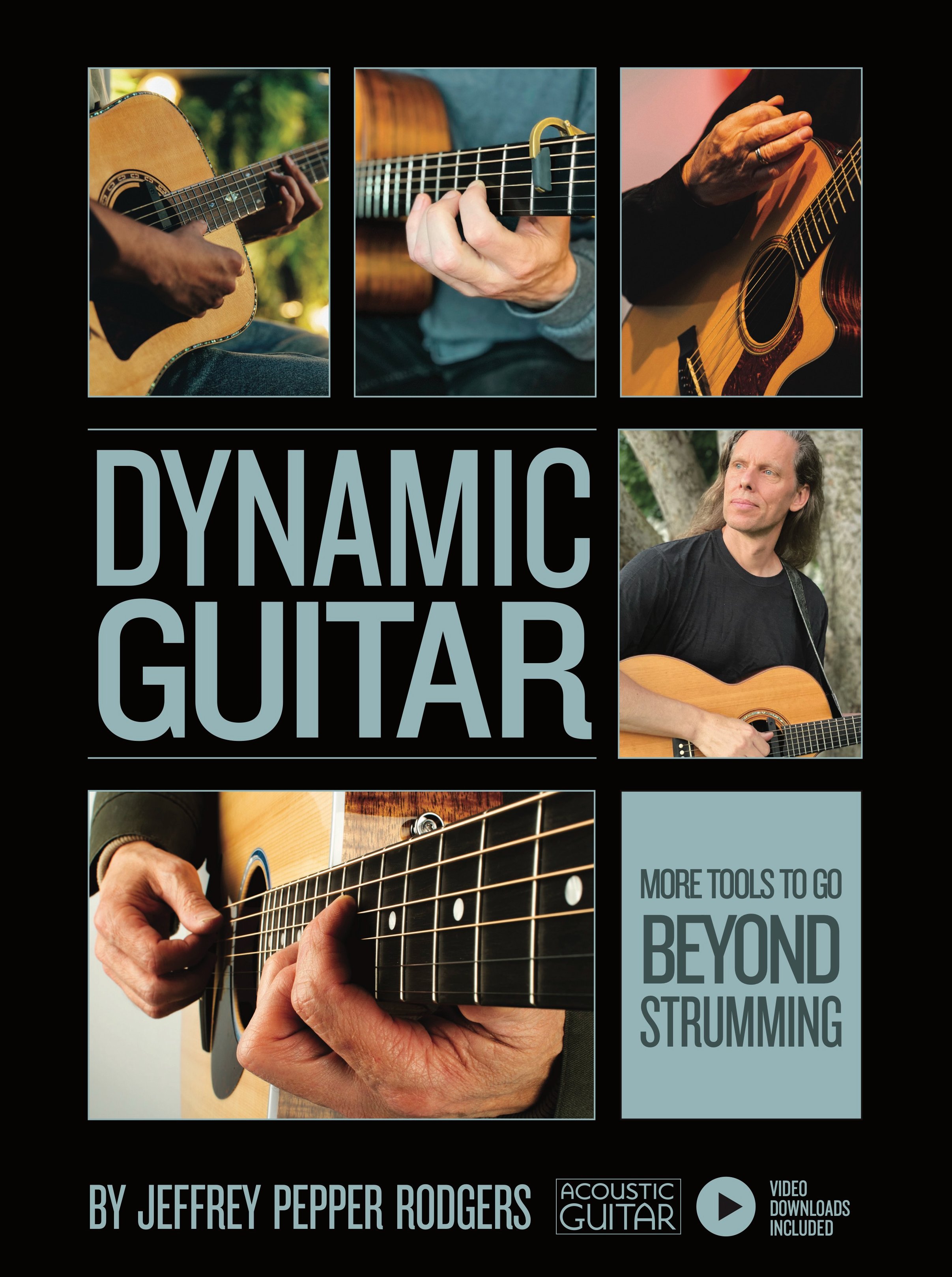
Beyond Strumming
Learn to create dynamic accompaniment parts in any setting
“A great resource for people looking to play songs in new ways, Beyond Strumming provides guitarists with a useful toolbox of accompaniment techniques in a methodical and clear format.”
—Chris Eldridge (Punch Brothers)
Beyond Strumming is the ultimate guide for any guitarist who wants to go beyond playing the same patterns in song after song, and create accompaniment parts that are more dynamic and distinctive.
Jeffrey Pepper Rodgers, the founding editor of Acoustic Guitar magazine and a grand prize winner of the John Lennon Songwriting Contest, shares the secrets of effective accompaniment in any style. Through 20 easy-to-follow lessons, you’ll expand your accompaniment toolkit so you can create fresh and varied guitar parts that make the songs shine.
Includes 120 pages of instruction, exercises, and songs to play, with more than 2.5 hours of video.
Digital edition (pdf and video) available from Acoustic Guitar.
New!
Dynamic Guitar: More Tools to Go Beyond Strumming
Six lessons with scores of examples inspired by classic songs. Includes more than two hours of video instruction. Learn more.
About Beyond Strumming
“Well, as I suspected, Jeffrey is going to put us all out of work with this book! The tricks we’ve held as trade secrets will now be as ubiquitous as reverb.”
— Willy Porter
“You don’t need to be a virtuoso to play interesting guitar parts or accompany your songs in a more compelling way. I spent years dead reckoning my way to some of these approaches that Jeffrey lays out clearly in these pages. I wish this book had existed when I was learning how to play guitar.”
— Mark Erelli
“Jeffrey is a great guitar player. Sensitive and strong, and makes it look deceptively easy.”
— Dan Bern
What you’ll learn
The Beyond Strumming book/video series features 20 multimedia lessons with exercises and songs to play.
Explore New Sounds
Cross-Picking Accompaniment
Flatpicking Fills
Melodic Riffs
Hybrid Picking
Pianistic Picking
Open-String Chords up the Neck
Movable Shapes without the Barre
Dropped D in Other Keys
Low-Bass Tunings
Partial Capoing
The Basics
Less Is More
Developing Bass Lines
Muting
Power Chords
Sus Chord Embellishments
Percussive Grooves
Rock Rhythm
Dropped-D Tuning
Accompanying a Waltz
Arranging with a Capo
From the introduction
No doubt, strumming is a potent technique on the guitar—it’s a quick and natural motion, it cuts through, and it adds a percussive punch along with the chord. All you need are a few chord shapes and a simple strum pattern and, boom, you can start playing songs. That accessibility is one of the beauties of the guitar.
The good news is that all sorts of sounds and textures for accompaniment are, literally, close at hand.
Over time, though, the limitations of strumming as your go-to accompaniment technique become apparent. The fact that strumming is easy to do also makes it easy to overdo. Banging out thick chords throughout a song can overwhelm the vocal and actually mask the rhythmic feel. Strong melodies, lyrics, and grooves need breathing room, and songs also need contrast. Strumming at full blast throughout a song, and especially doing so in song after song in performance, will wear out everyone’s ears—plus it gives you nowhere to go, in terms of volume and intensity, but down.
The good news is that all sorts of sounds and textures for accompaniment are, literally, close at hand.
With a little more attention to your fretting and picking hand technique, you can go beyond constant strumming and create guitar parts that are more dynamic, supple, and nuanced, both harmonically and rhythmically. That’s the goal of this guide: to expand your accompaniment toolkit so you can not only vary the guitar part within a song, but change up the sound from song to song and keep them from blurring together.
When you’re the only instrumentalist accompanying your own voice or another singer, your guitar is essentially the band. Beyond Strumming aims to help you become a more versatile band—and, most importantly, make the songs shine.
—JPR





